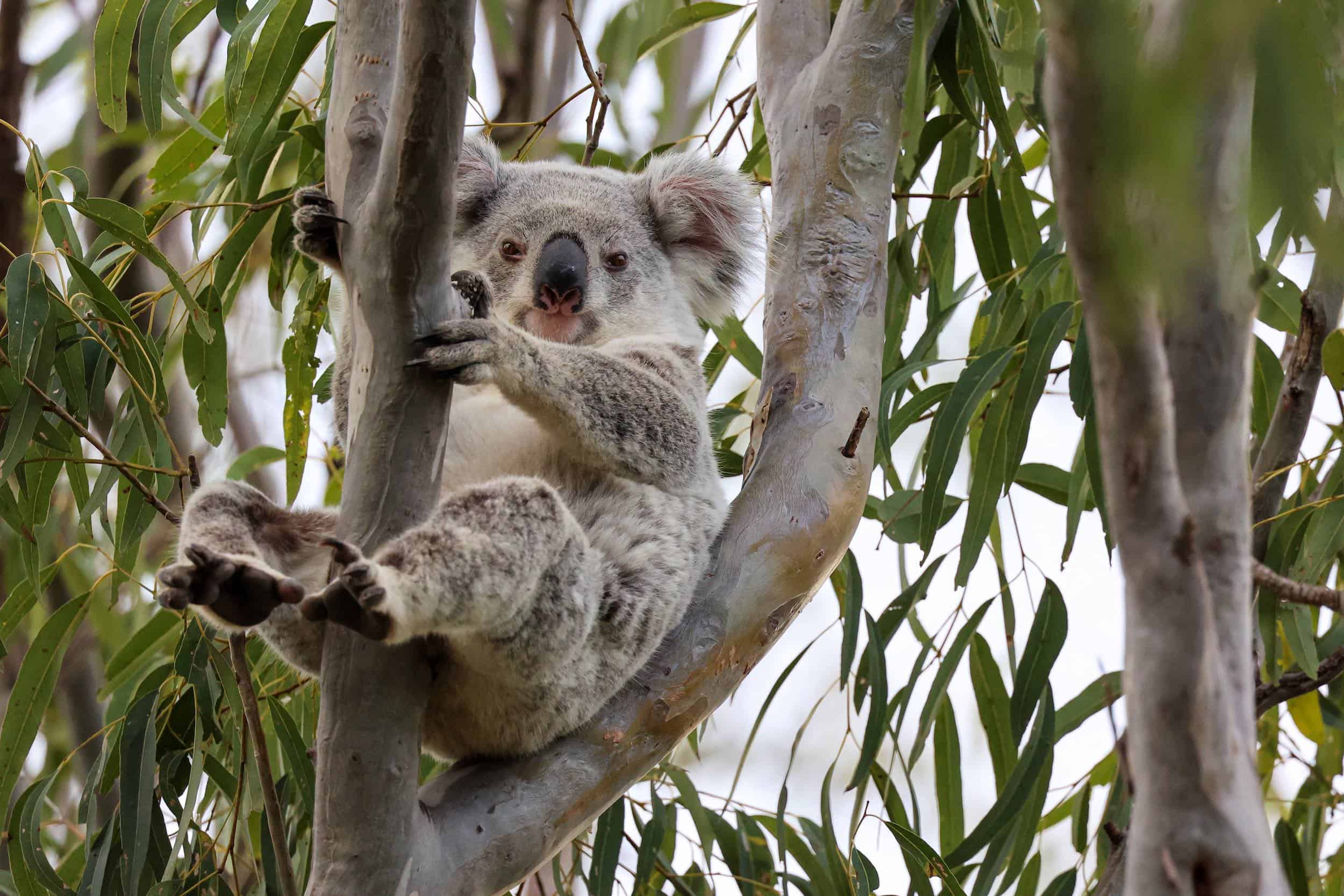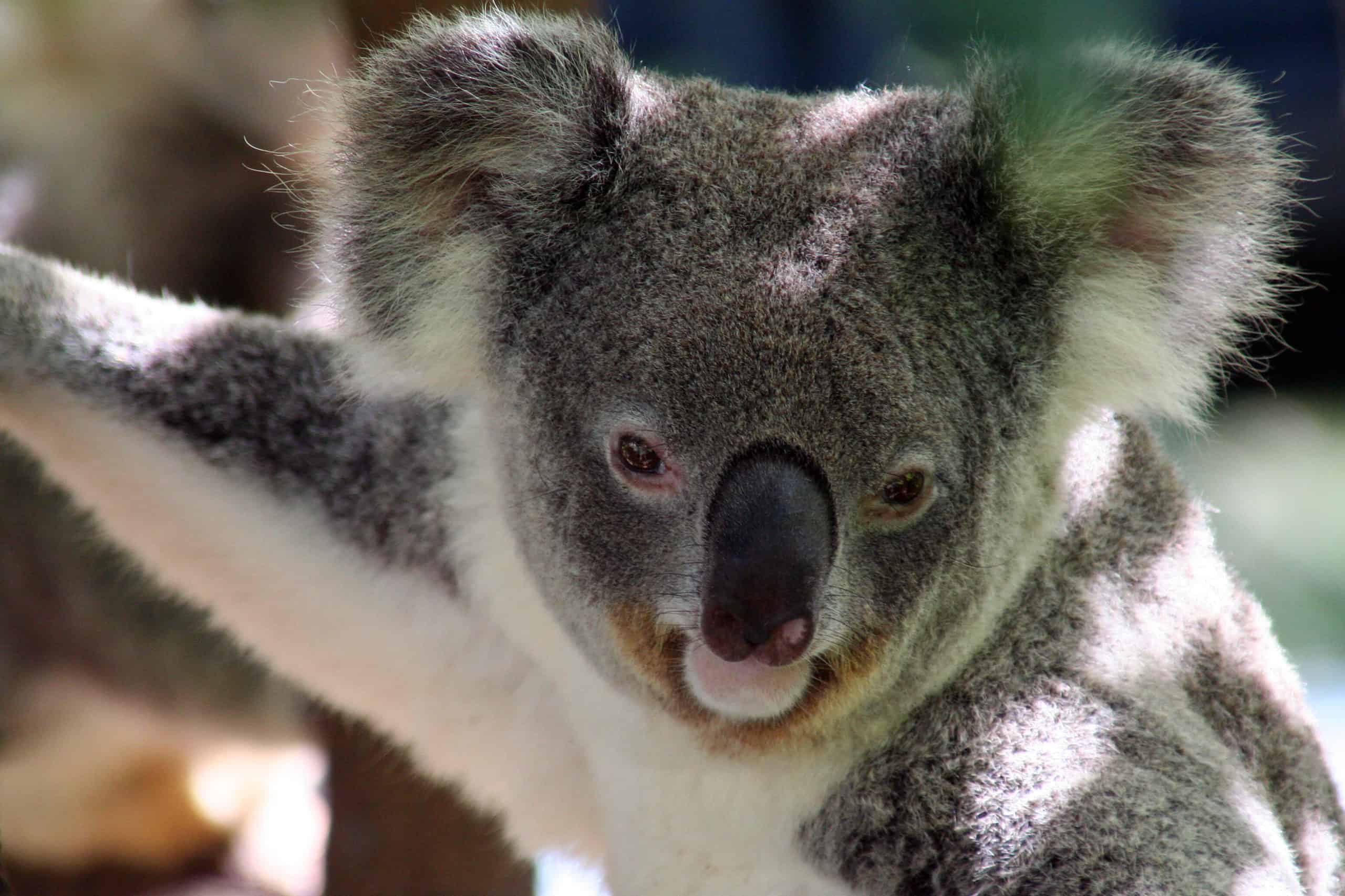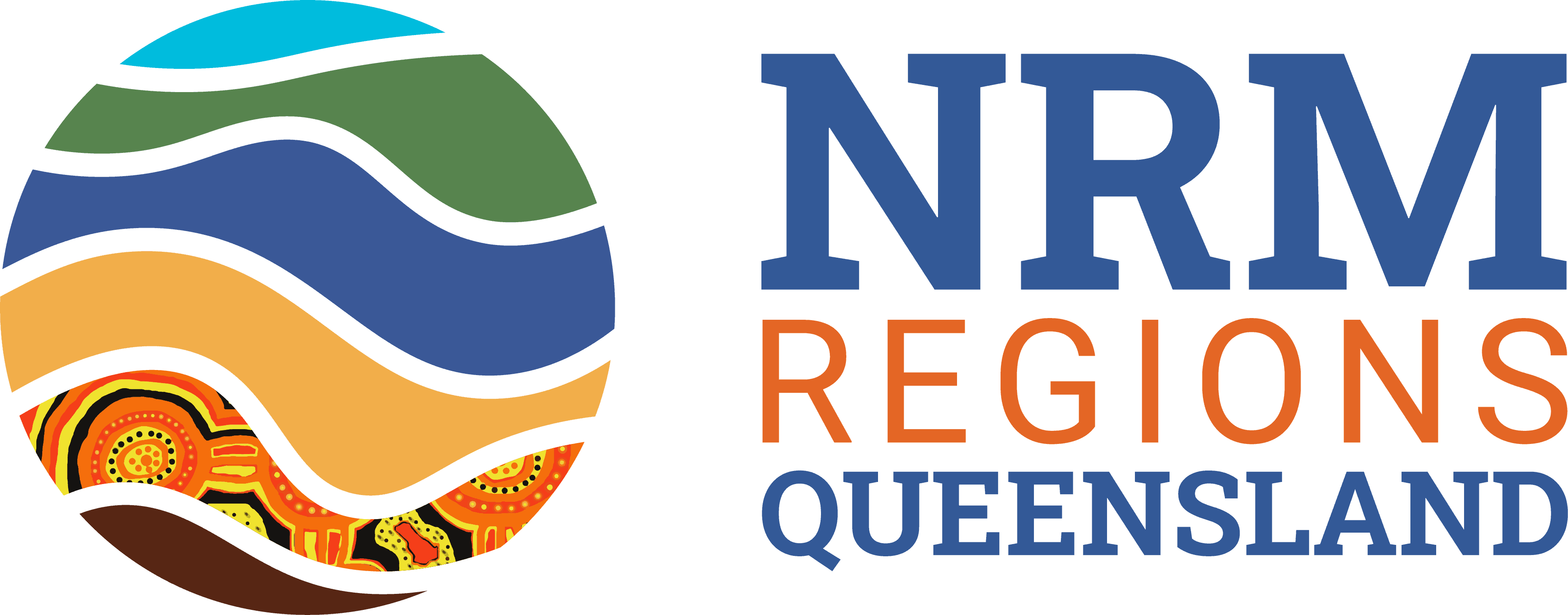Koalas are iconic. But they’re also a species in peril. In 2022, the status of the koala changed from vulnerable to endangered. While the change in status is alarming, it also means an increased level of protection for the species.
Queensland’s koala populations are in decline and local extinctions continue to occur. This is largely due to clearing and fragmentation of koala habitat.
Queensland’s regional NRM organisations, with the support of the Australian Government’s Saving Koalas Fund are working to reverse this trend.
The Saving Koalas Fund will provide $76.9 million over 4 years to support the recovery and long-term conservation of the koala and its habitats.
Sarina landholders protect koalas
Reef Catchments, the Natural Resource Management organisation for the Mackay Whitsunday Isaac region, has been awarded $3.5 million from the fund to expand and improve koala habitat in Sarina.
Kira Andrews is the Coordinator of the project which supports Sarina landholders to treat weeds such as lantana and guinea grass which choke out native trees and pose a significant fire threat to koala habitat.
Kira says the project will enable the community to plant koala food and habitat trees to create and sustain koala friendly corridors and that the investment was made possible by the commitment of the Sarina community to build and maintain connected landscapes to protect and conserve local koalas.
“While there has been considerable attention and support for southern Queensland koalas, this project represents the Australian Government’s first significant investment into koala conservation in the Mackay Whitsunday Isaac Natural Resource Management area,” Kira said.
Charley Geddes, a local koala researcher, has identified over 400 koalas in and around the nearby town of Nebo. She has found koalas in all the places you would expect and many places you would not.
“Every tree is important,” Charley said. “Koalas only eat the leaves of a select few tree species – primarily eucalypts – so every single koala food and habitat tree that we can preserve or plant is an opportunity to create a better future for koalas in our region.”

Photo: Charley Geddes
Koalas get a boost in the Fitzroy Basin
Fitzroy Basin Association, based in Rockhampton has also received $4.5 million from the program to restore and protect koala habitat in the Clarke-Connors Range – one of the largest wilderness areas in Queensland and one of the most significant koala populations in regional Queensland.
The project will deliver weed control to reduce fire risk, improve koala movement and promote the growth of native species. Land managers, local and state government, and First Nations People, will be involved in the two-year program.
Dr Mark Shultz is a highly specialised and regarded ecologist and is leading the project.
“FBA has been working in the Clarke-Connors Range for a few years to gain an understanding of the area’s koala population and koala habitat. To do this we have worked closely with passionate and enthusiastic land managers and a local koala advisory group,” Mark said.
This project is a fantastic opportunity to action identified priority work and collaborate with more graziers who are keen to improve the health of their local environment for their business and koalas.
Scenic Rim koala conservation efforts
Healthy Land & Water, the regional NRM organisation for Southeast Queensland has also received a welcome boost to its koala conservation programs, securing $1.2 million from the Saving Koalas Fund.
Their efforts will focus on expanding work already taking place to protect koalas around the Scenic Rim with key koala habitats across Flinders Peak, North Pine, Lake Manchester and Grandchester earmarked for targeted planting, weed control and improved fire management.

Koalas in South-Western Queensland
Much further west, Southern Queensland Landscapes has also received a grant from the Saving Koalas Fund to provide restoration, rehabilitation and other koala management advice to landholders.
There have only been 17 official sightings of koalas in the south-west of Queensland since the 1980s so the group will be using cutting-eye habitat mapping as well as local knowledge of koala locations, especially from First Nations peoples.
Southern Queensland Landscapes will work with its partners, including citizen scientists and its own koala detection dogs, to confirm stronghold areas of current koala populations and improve the habitat values, including landscape linkages, to enhance their resilience to climate change.
With work starting immediately it’s not a moment too soon for these western koala communities who have been doing it tough.
“These key koala populations throughout Queensland’s Rangelands are at the western edge of the species range,” a Southern Queensland Landscapes spokesperson said.
These fringe populations have been facing huge challenges owing to declining habitat, predation from feral animals like wild dogs, foxes and cats, drought, heatwaves and other impacts of climate change.
Koalas are just one threatened species that Queensland’s regional NRM organisations are working on. See more of our threatened species work here.
Feature image: Charley Geddes
